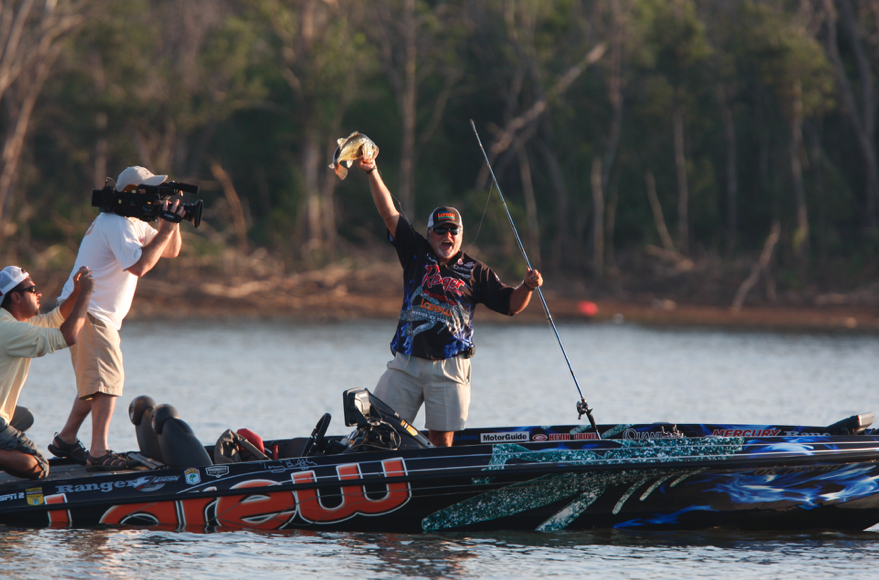
Tommy Biffle lives in Oklahoma, where the deer gun season always opens on Nov. 20. On that day the landscape is typically dotted with orange-clad, rifle-toting hunters with murder on their minds. Biffle also focuses on “murder” on this day, but of a different kind. “Everybody’s deer hunting, and nobody’s fishing,” he says. “This leaves the lakes virtually empty. But I tell you, you can usually ‘kill’ the bass this time of year — I mean catch a hundred of them — if you know where to look and what to throw. This is a great time and pattern for both numbers and big fish. It’s unbelievable how good the fishing can be, but how few people know about it and do it!”
“It” is working a Heddon Zara Spook over “dark spots” — isolated submerged stumps — on shallow flats and in back-bay areas. Biffle, a veteran Bassmaster Elite Series angler with several tourney wins under his belt, says, “This pattern is about as dependable and fun as it gets. This time of year the fish get on the stumps in big numbers, and they’re super aggressive, but nobody’s fishing for them. Most everybody is in the deer woods, and what few anglers are on the lake are fishing deeper water, thinking the bass have moved out because of the colder temperatures. So, how much better can it get?”
The lake Biffle is referring to is Tenkiller Ferry Lake, a U.S. Army Corps of Engineers impoundment on the Illinois River in eastern Oklahoma. This lake is relatively clear in nature, with water visibility averaging 4 to 6 feet, depending on rainfall. In autumn, Tenkiller’s level is drawn down 3 to 4 feet, which exposes stumps that are scattered across the lake’s shallow flats and in the backs of tributary creeks. Biffle says, while most of these stumps are still underwater, they are visible as “dark spots” beneath the surface. “You just cruise around and look for them; you’ll see them,” he notes.




